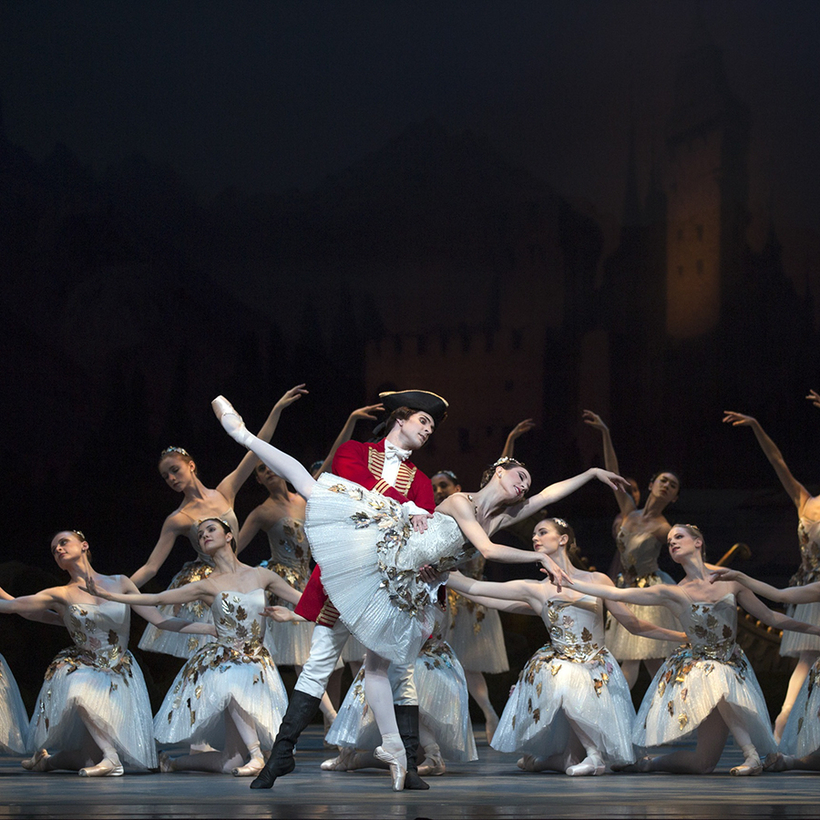May in Manhattan. Think maypoles. Which means, think ballet. Ribbons don’t only hold the pointe shoe in place. The lofting, circling ribbons on ballet’s maypole, though manipulated by artists onstage, are a metaphor for our interwoven society, and for the ballet audience, which includes tween “ballerinas” (long-necked and big-eyed, like baby llamas), size-2 socialites and their momentarily subdued husbands (the art of the deal!), and a vast landscape of classical dance connoisseurs. As for the critics, as the late dancer Vadim Strukov once told me, “You learn more from a brilliant enemy than from a stupid friend.” Emotions, ambitions, opinions—tied up in ribbons—that’s spring season in New York. For the first time in our memory, the ribbons are missing. Friends of Air Mail weigh in on the absence. —Laura Jacobs, editor, Arts Intel Report
This year May will come and go without dance at Lincoln Center, leaving an unprecedented gap. But memories can be sustaining, especially hopeful ones. In May of 2015, American Ballet Theatre performed Alexei Ratmansky’s interpretation of Marius Petipa’s The Sleeping Beauty, his choreography of 1890. It is now one of my most cherished memories. Ratmansky returned to the earliest notations and scrubbed away many of the Disney flourishes that have recently found their way into the ballet. Instead of the simplified narrative that so many productions now use—a bounding prince (aided by the indefatigable Lilac Fairy) who obliterates the evil Fairy Carabosse so that he can settle down with Aurora in a Hallmark-card castle—Ratmansky’s Beauty offered a more nuanced and profound approach. Carabosse is defeated but not destroyed, forgiven and invited to the wedding, but kept at a wary distance. Aurora and the Prince have won their triumph because they are merciful. I walked out of the theater that night with the feeling that we can be generous. And that although there will always be darkness, there will also be lilacs. —Mary Cargill, critic, Dance View Times
I had written about music and art, but never about dance, when a friend who did write about it had an extra comp and took me, one spring evening in the 1970s, to my first ballet performance. I thought intermission would be a rest, but learned different when my friend clumped eagerly with other writers and editors to cluck over the latest dance news and gossip. Naively, I ventured a remark about George Balanchine and an editor said, “That’s interesting, write that.” And I did wind up writing it for him—my first dance piece of many. Subsequent springs meant more ballet and more gossip, in rounds of performance-going that I, like many, became addicted to. More than 40 years went by. This year—and surely it’s the cranky senior in me—I felt myself relieved to be free of the need to put on proper shoes and a blazer for those ballet outings (classical dance attracts the most beautiful of audiences). Yet now I find I miss the intermission huddle, the juicy gossip, the art of kings and czars. I miss sharing that extra comp with someone who has never seen all this before, who will go home yabbering about wanting to see more, and will maybe even write about it.—Stephen Greco, novelist and editorial director, InsideRisk
The absence of ballet seasons here in New York reminds us that the art has to be seen from a seat out front and with live performers in first-rate choreography in order to make itself known. Despite their invaluable use as documentation and memory aids, video and film don’t transmit that specific, refined rhythmic energy straight into the eyes, ears, and mind—or rather, the eyes, ears, and mind need to be on site to collaborate efficiently in the experience. It also helps to have repertory performances for the knowledge that comparative judgments permit a viewer. It is through such regular evaluations that we learn about a sophisticated form. And a great ballet asks to be viewed multiple times. There is really nothing like the ballet for educating visual-aural acuity and the assimilation of immediate, living sense-data toward the intense, near-therapeutic effect of great art. That unique thrill along the spine is what is missing this spring. —BalletVoice.com
Forty-five years ago this spring I was a “specialist” (one article published!) in the postmodern dance that put “mundane tasks” on the stage. No more Establishment hocus pocus for my anti-Vietnam War generation. But a dance critic has to play the field, so I took myself to the New York State Theater, where … a ton of bricks, or rather, a ton of amusement parks hit me: George Balanchine’s Raymonda Variations. That Glazunov finale with the oom-pah-pahs and the trombone going mad and the whirling pale-pink people behind the diving mint-green couple. I can see my own face, as if lit by fireworks. So, since 1974, no spring without the New York City Ballet spring season. Last May I caught myself thinking: “My God, I grew up here.” My solace for the vanished spring season of 2020? Watching the ballet offerings from New York City Ballet’s digital spring season (Apollo, with Taylor Stanley as the young god). Working on Cold, Luminous, Hard as Light: Balanchine Comes to America, my book in progress. —Elizabeth Kendall, writing and literature professor, Lang College of the New School
